Fife
Other Fife resources on this site:
There are extensive extracts on Fife in the 1842 Commission reports and also the Mining District Reports. Fife housing is covered in the 1875 Notes on Miners' Housing and the 1918 Royal Commission Report. Information on the Fife Coal company, including lists of veteran employees can be found here. The following parishes have their own pages:
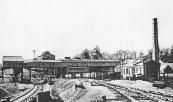
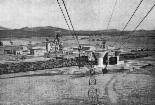
Above (L to R) Valleyfield Colliery and two views of Comrie Colliery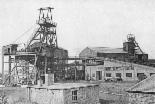
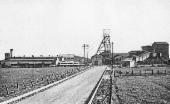
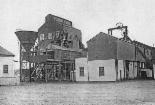
Above (L to R) Randolph and Frances Collieries Dysart, Wellsgreen Colliery

Above Thornton Mine & Fife Coal Co Offices at Leven
Gazetteer Descriptions
The following websites contain on-line versions of Groome's Ordnance Gazetteer of Scotland and Samuel Lewis Topographical Dictionary of Scotland.Ordnance Gazetteer of Scotland, Francis H Groome
Boreland, a collier village mostly in Dysart, but partly in Wemyss parish, Fife, adjacent to the North British railway, 1 1/4 mile N of Dysart town. It was founded about 1735. A public school, with accommodation for 84 children, had (1891) an average attendance of 83, and a grant of £78, 8s. 6d.
Callange, Coaltown of, North, and South, three neighbouring collier hamlets in Ceres parish, E Fife, 3 3/4 miles SE by E of Cupar.
Comrie, a hamlet in Culross parish, Fifeshire, 1/2 mile W by N of Oakley, and 5 miles of Dunfermline. A little to the W is Comrie Castle.
Coull, a collier hamlet in Markinch parish, Fife, 1 3/4mile NW of Markinch town.
Crossgates, a village on the mutual border of Dunfermline and Dalgety parishes, Fife, with a station on the North British railway, 3 1/2 miles ENE of Dunfermline. Inhabited chiefly by colliers, it is surrounded at near distances by extensive coal mines; adjoins lines of mineral railway, communicating with St David's harbour on Inverkeithing Bay; and has a post office, with money order, savings' bank, and telegraph departments, 2 hotels, a U.P. church (1802; 531 sittings), and a public school, which, with accommodation for 213 children, had (1891) an average attendance of 218, and a grant of £189, 2s.6d. Pop. (1841) 646, (1861) 1115, (1871) 1181, (1881) 1057, (1891) 1165.
Fordel Square, a collier village in Dalgety parish, Fife, contiguous to the boundary with Aberdour, and on the Fordel railway, near its northern extremity, 3/4 mile ESE of Crossgates. Part of it is called Wemyss Square, and the whole is often called simply Fordel. Pop. (1861) 813, (1871) 641, (1881) 488, (1891) 589.
Kingseat, a collier village in Dunfermline parish, Fife, 1 1/4mile N of Halbeath railway station, and 3 miles N of Dunfermline town, under which it has a post office - Ord. Sur., sh. 40, 1867.
Muirend, a collier village in Dalgety parish, Fife, 5 furlongs S of Crossgates.
Oakley, a village at the mutual border of Carnock and Culross parishes, Fife, with a station on the Stirling and Dunfermline branch of the North British railway, 4 3/8 miles W by N of Dunfermline. Built in connection with the Forth or Oakley Iron-works (1846), it chiefly consists of stone, one-story, slated dwelling-houses, disposed in rows, with intervening spaces more than double the breadth of the streets of the New Town of Edinburgh; and has a post office under Dunfermline, and St Margaret's Roman Catholic church (1843). The iron-works, now stopped, had six furnaces, with stalks 180 feet high; and the engine-house was built with walls so deeply founded and so massive as to comprise 60, 000 cubic feet of stone below the surface of the ground. Pop. (1861) 1817, (1871) 1127, (1881) 3l2, (1891) 369 of whom 123 were in Culross. - Ord. Sur., sh. 40, 1867.
Townhill, a collier village in Dunfermline parish, Fife, 1 1/2 mile NNE of the town. It has a post and telegraph office under Dunfermline, a public school (1876), and a chapel of ease (1878). Pop. (1871) 855, (1881) 186, (1891) 1801 - Ord. Sur., sh. 40, 1867.